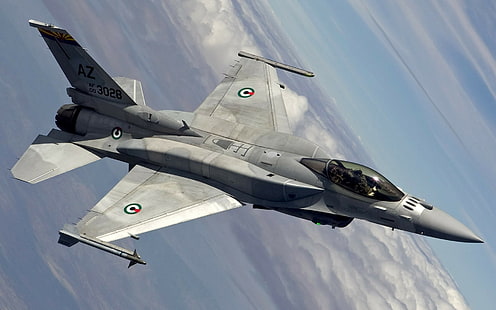
The F-16 Fighting Falcon, a workhorse of the U.S. Air Force since 1978, is slowly closing in on the sunset years of its glorious life.

Even though it remains the most sought-after multi-role fighter globally, and one that will continue to serve as a role model, with the introduction of the F-35 Lightning II into the fifth generation and international players continuing to advance, it marks the end of an era for this legendary warbird.

The F-16 has been upgraded countless times, including a Service Life Extension Program that will extend its operational life from 8,000 to 12,000 flight hours. However, upgrades are now at the limits of their potential against modern air defense systems.

“The F-16 has reached the limit of possible upgrades,” says national security analyst Brandon J. Weichert. A lot of new-emerging technologies include drones, directed-energy weapons, and hypersonic systems that the Air Force needs to focus on, thus setting out to keep its edge within the rapidly shifting threat landscape.

It is happening now, as more and more F-16 pilots begin their training programs at Luke Air Force Base in Arizona.

These airmen have spent decades honing their skills flying the F-16 and are being asked to master the next-generation F-35 fighter that promises to live on for far longer than its predecessor.

The F-16 will continue to operate well into the 2040s, but it won’t be the Air Force’s frontline fighter anymore.

The Automatic Ground Collision Avoidance System, developed by Lockheed Martin in 2014, has been a major milestone for the F-16, saving several lives from deadly crashes.

This system was intended to reduce the number of controlled flights into terrain incidents, which contribute significantly to aircraft losses and fatalities among pilots.

The Next Generation Air Dominance program is poised to change the U.S. Air Force’s modernization plans. It focuses on air superiority through a system-of-systems approach this highly classified effort.

A sixth-generation family of fighter aircraft will also be the centerpiece, as various manned aircraft, unmanned air vehicles, and advanced systems, command, control, and communication systems.

The NGAD fighter is going to replace the F-22 Raptor as early as 2030, and the Air Force initially buys 200 NGAD fighters and 1,000 unmanned collaborative combat aircraft.

A related development is that General Atomics has been contracted to modify a pair of MQ-20 Avenger drones into surrogate adversary autonomous aircraft for a Pentagon training program.

Those drones will be Advanced Air-to-Air threats to current fourth and fifth-generation U.S. fighters, thus dramatically increasing mission success in realistic air-to-air training scenarios.

The F-16 has an incredibly wonderful combat record and has been phenomenally versatile in combat, one of the greatest warplanes ever fielded by the Air Force.

However the world is entering into a fifth-generation and beyond combat environment, and it becomes obvious that the requirement for advanced and innovative technologies increases more and more.